There’s something magical about orchids. The delicacy of the familiar tropical orchids has long beguiled plant lovers; but their hardy relatives, which flourish in temperate zones from Europe to Southern Australia and on subtropical mountains, can be just as enigmatic.
I first fell under hardy orchids’ spell at a specialist nursery several years ago. I’d intended to buy two plants but somehow came away with three. Now my rapidly expanding collection thrives in a raised woodland border. Sheltered by a wall and trees, and protected by a layer of free-draining, organic matter at the base, they add an exotic touch to my otherwise traditional woodland planting.
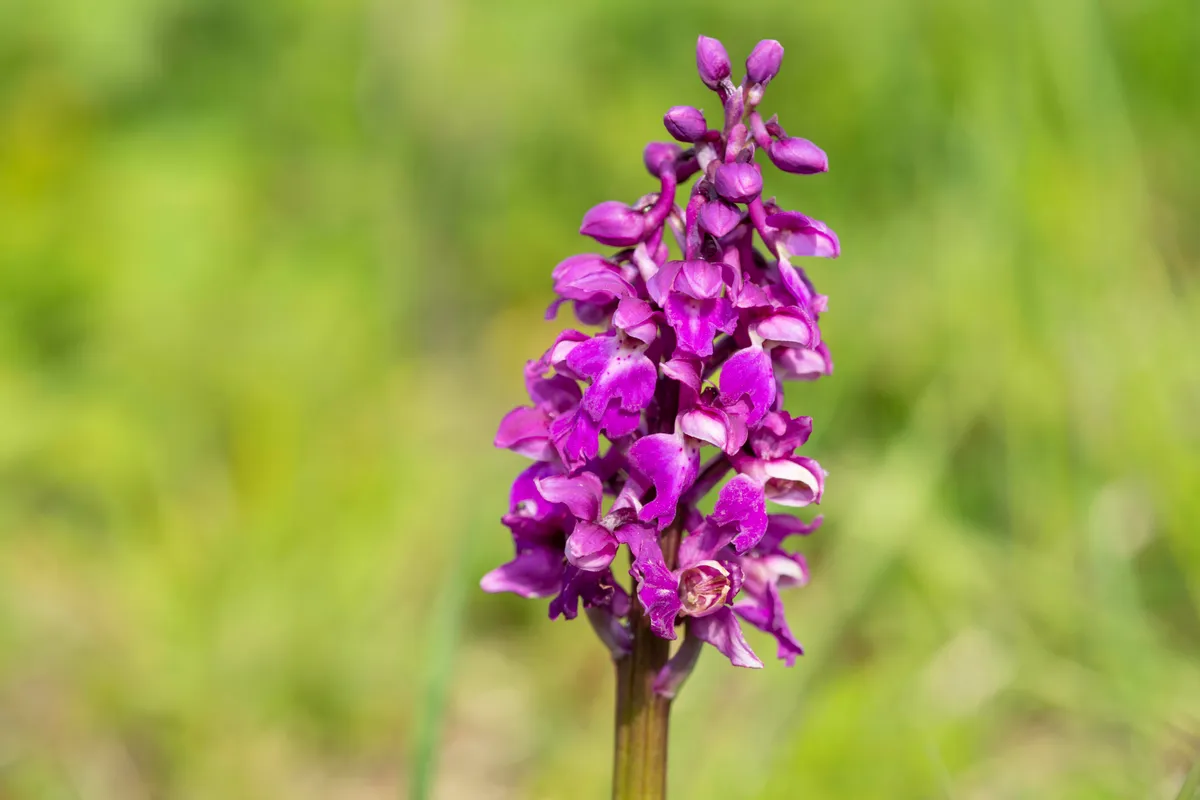
Around 20 genera of this huge family are hardy in the UK, and most of the 108 hardy species are available to buy. One of most delightful is the semi-evergreen Calanthe tricarinata. With lime-green and brown flowers on long upright spikes, it flourishes in organic-rich soil in damp shade, and works well alongside hostas and ferns, and the emerging butter-yellow fronds of Athyrium otophorum var. okanum. Its close relatives include Calanthe striata, which boasts dense spikes of bright, golden yellow, and Calanthe nipponica in green and pale lemon. The Calanthe Kozu hybrids, selected for showing, come in a range of vibrant colours with flowers in combinations of white, yellow, terracotta and red or purple. Although the pleated leaves become untidy with age, resist the temptation to remove them until the new growth and flowers start to emerge in spring.
Below is more about hardy orchids and how to grow them.
Jump to
- How to grow hardy orchids
- When do hardy orchids flower?
- Feeding hardy orchids
- Pests and diseases
- Growing hardy orchids in containers
- The best hardy orchids to grow
- Hardy orchids for meadows or boggy ground
- Hardy orchids for gardens and containers
- Hardy orchids for woodland areas
- Discover more about hardy orchids
- Where to see and buy hardy orchids
How to grow hardy orchids
Orchids, even hardy ones, are sensitive to their habitat and have specific needs when it comes to moisture levels, drainage, aspect and shade. As with most plants, the key to successful planting is to try and replicate the growing conditions of their native habitat in the garden.
When do hardy orchids flower?
Genera that spread by rhizomes or pseudobulbs, such as Epipactis, Cypripedium, Bletilla and Calanthe, die back in winter. Some tuberous genera, such as Dactylorhiza, produce a rosette of leaves in spring then flower in late spring and summer. Others, such as Orchis and Ophrys, produce a rosette in autumn, take advantage of winter rain, and then flower in spring or early summer, avoiding summer droughts by becoming dormant.
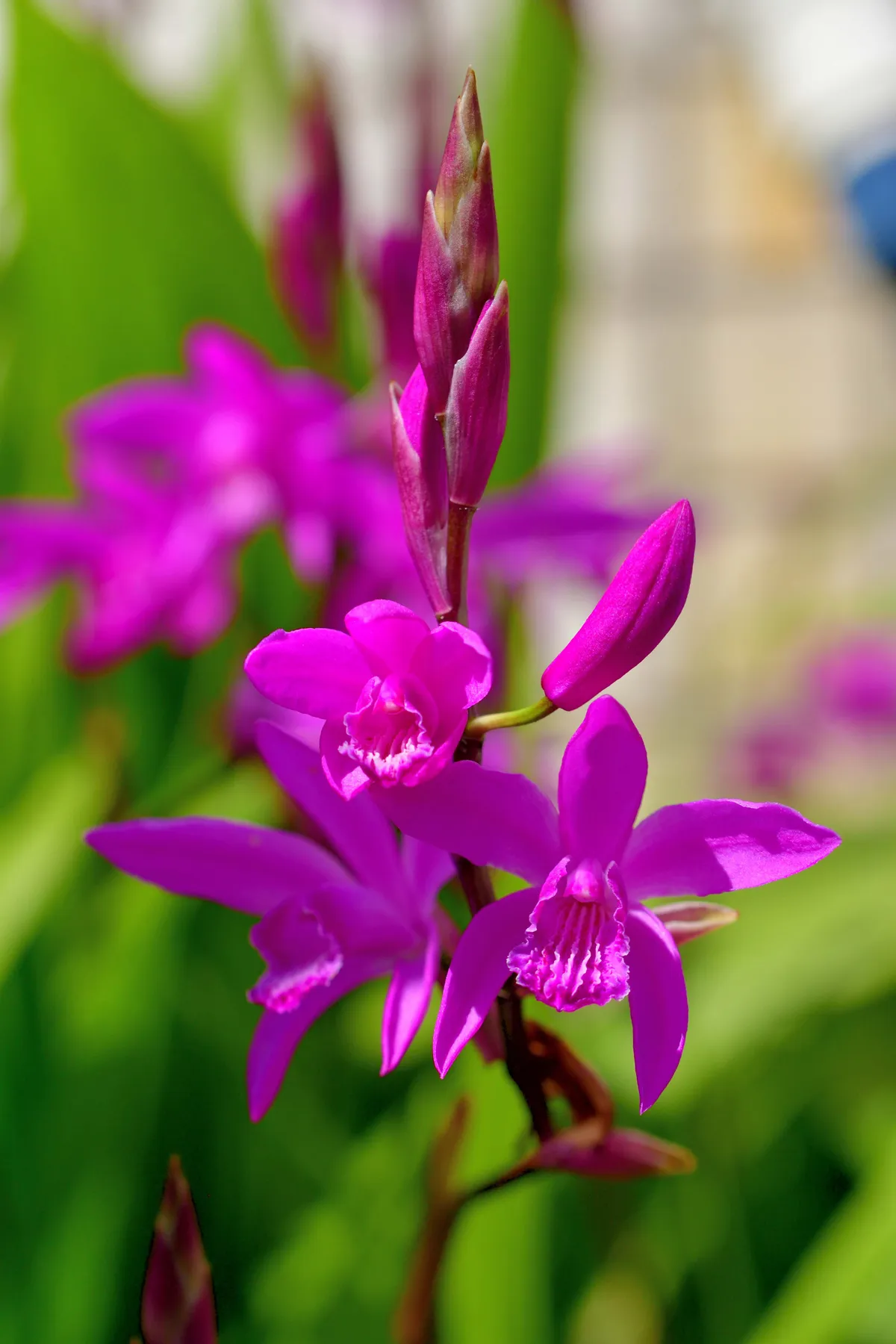
Feeding hardy orchids
Most orchids will benefit from feeding, with a high-potash fertiliser at 25-50 per cent strength during the growing season. Pleione, however, require a balanced general fertiliser at 25 per cent strength until August, followed by a 25 per cent high-potash fertiliser, and Epipactis do not need any feeding. All need a 10cm layer of bark, straw or similar mulch to protect them over winter from frost.
Pests and diseases
Watch out for slugs and snails, especially in early spring. If you can’t face picking these off by hand at night, opt for biological controls, such as nematodes, traps, copper bands and ferric phosphate slug pellets, or encourage natural predators, such as ground beetles, toads and thrushes.
Aphids can also be a problem on young shoots and flower buds. Use contact insecticides based on natural substances, such as fatty acids, squash by hand, encourage predators, such as hoverfly, ladybird and lacewing larvae. Avoid pesticides as they may not have been tested for use on orchids.
Growing hardy orchids in containers
Although hardy orchids prefer a border position, most will grow in pots, allowing you to move them to a frost-free spot when temperatures fall. If you’re growing in a pot you should ideally use a specialist compost mix. Some have a wider range of ingredients than others and it’s best to find the simplest recipe for your needs. Orchid Accessories and Orchid Supplies both offer several options. Most orchids need a moisture-retentive, organic-rich mix with perlite and grit to improve drainage and prevent stagnation. I’d recommend using similar for backfilling when planting in borders. Alternatively, you can ‘plunge’ pots (sink pots up to the rim in the soil), if they need to be overwintered indoors.
Check out our orchid pot display.
The best hardy orchids to grow
Hardy orchids for meadows or boggy ground
Dactylorhiza maculata subsp. fuchsii
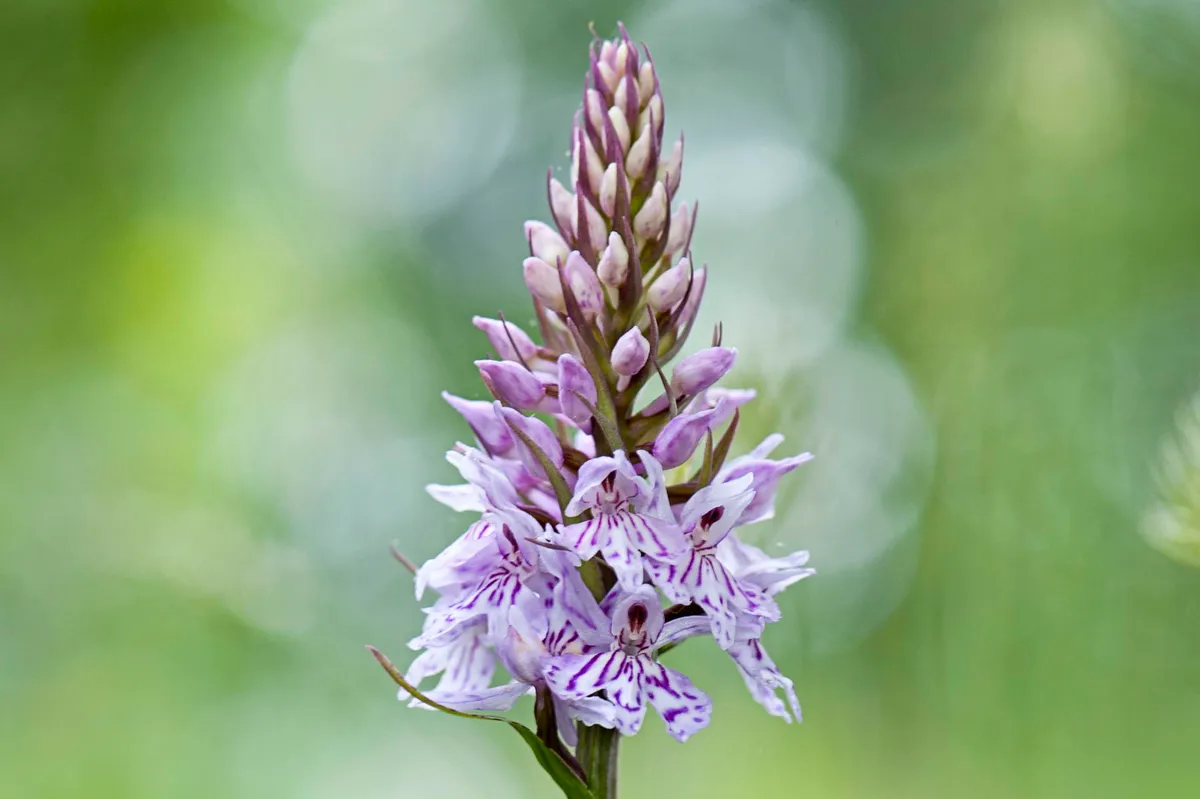
The common spotted orchid has lance-shaped leaves, often spotted, and dense flower heads in pale pink, mauve or white with lines or dots of deep red or purple shades. Grows in moist but well-drained humus-rich soil in partial shade. 45-60cm.
Ophrys apifera
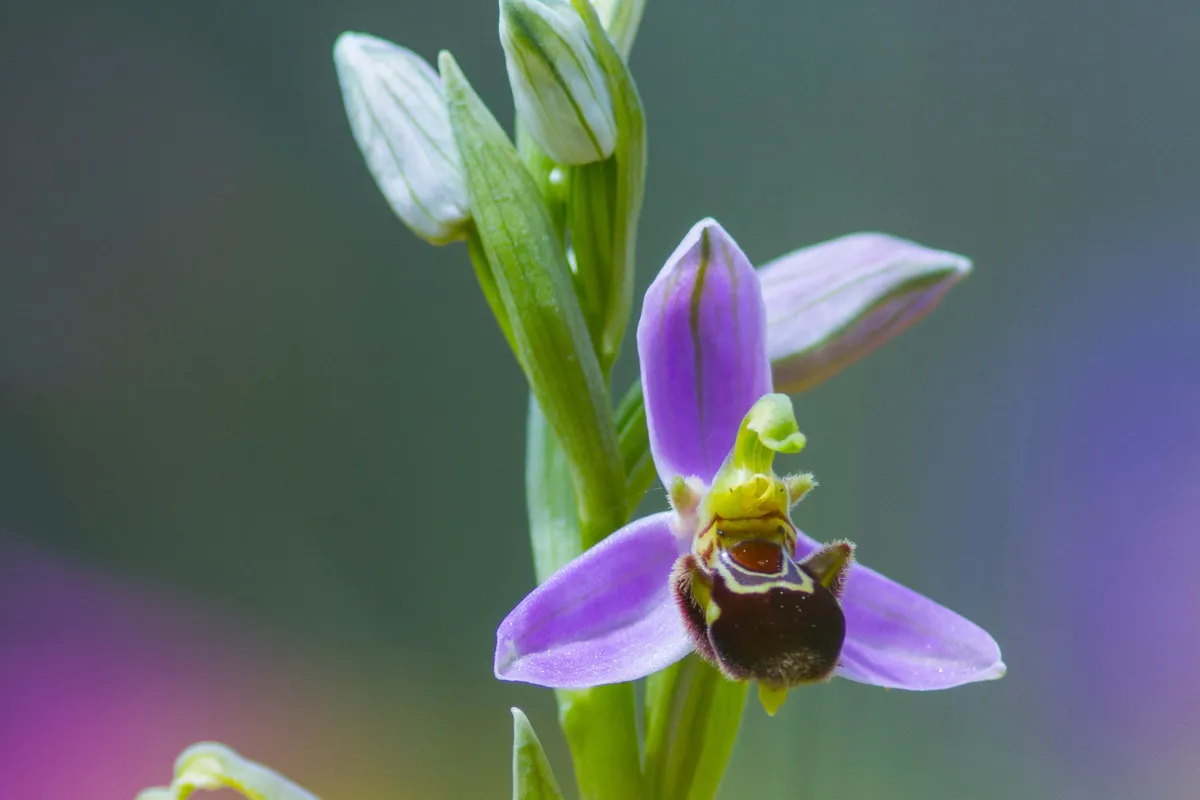
Also called the bee orchid for its intricately patterned lip. Requires alkaline soil in carefully managed grassland. It’s worth growing this small-flowered beauty in a pot so you can adore it at eye level. 15-30cm. USDA 7b-10b.
Cypripedium reginae
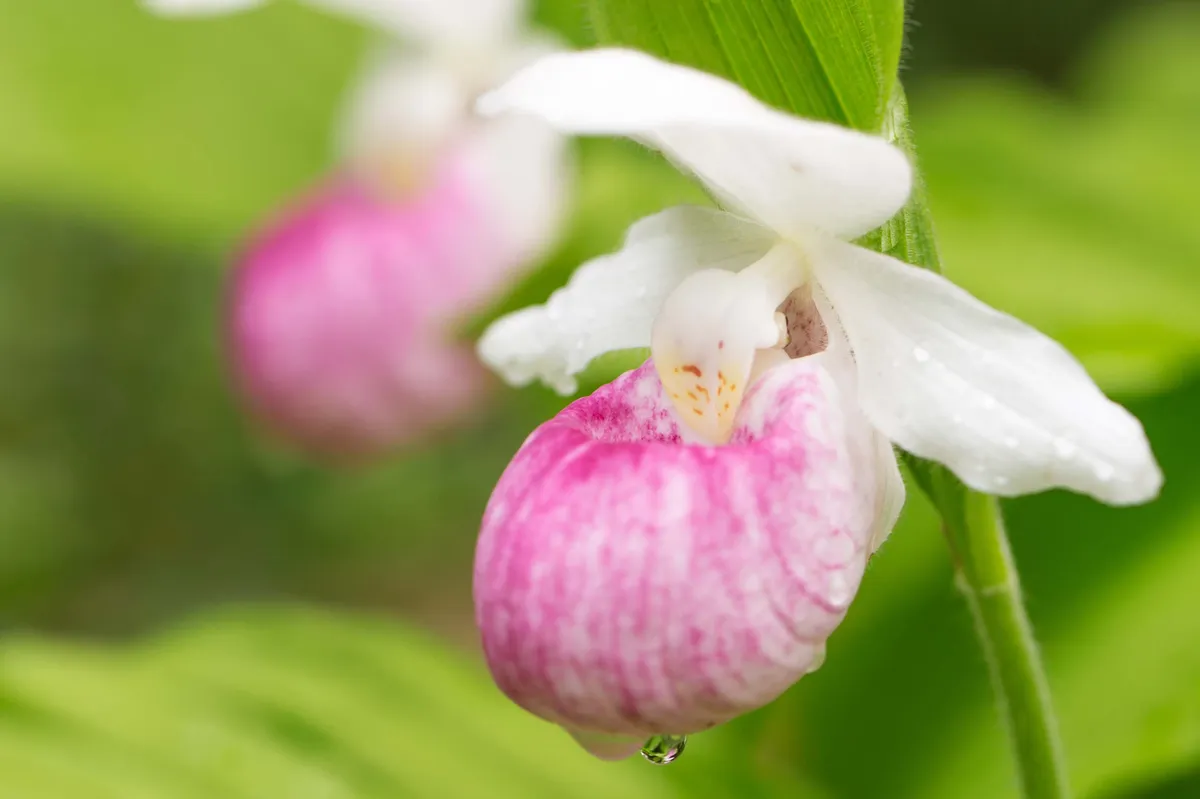
Widely available and ideal in boggy ground by a pond or in a pot with drainage holes in the sides. A large clump of these white and candy pink flowers makes a splendid feature. 60-90cm. AGM. RHS H5, USDA 3a-8a.
Orchis mascula

Known as the early purple orchid for good reason as it produces spikes of up to 50 deep-purple flowers from as early as April through to July. Very adaptable, it grows in meadows, woodland borders or rockeries. 15-22cm.
Epipactis gigantea

Thrives in boggy ground and is good by a pond. Although it prefers full sun, it will tolerate some shade. The attractive, pink-striped flowers are so complex, they are worth looking at under a magnifying glass. 45-60cm.
Epipactis palustris
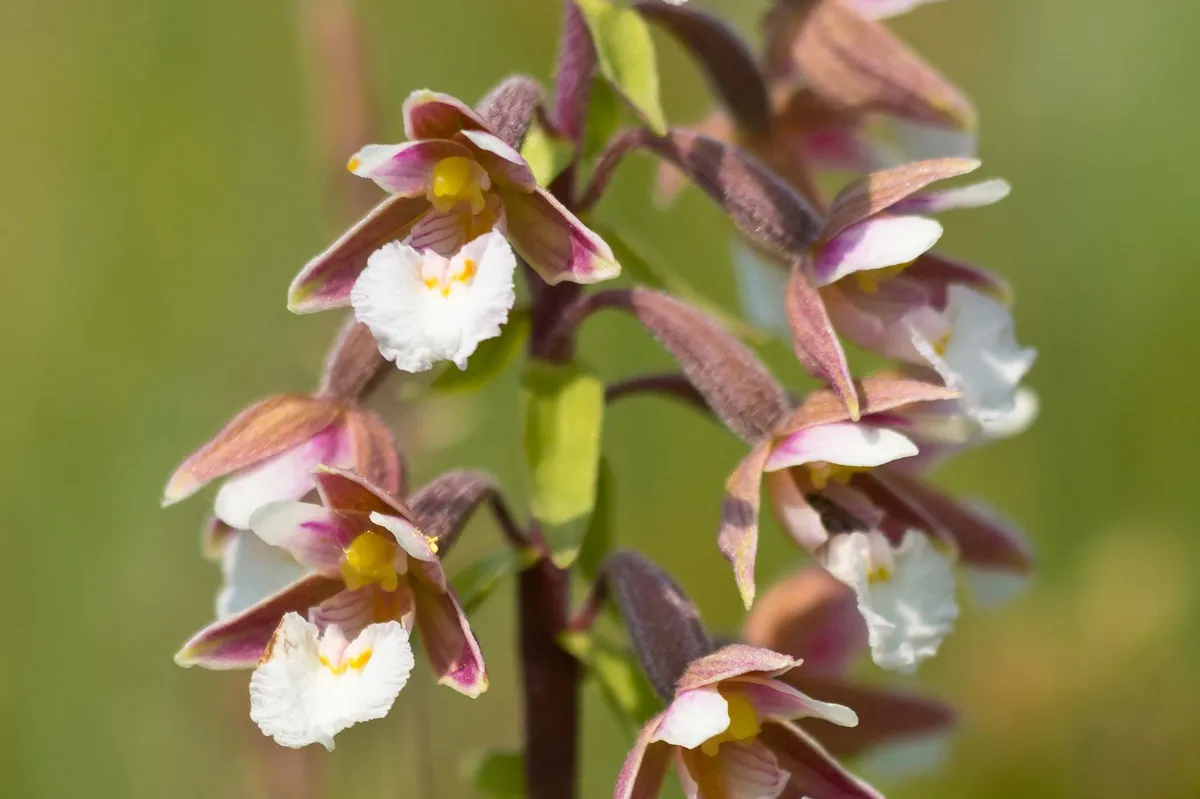
A pretty orchid, known to many as the marsh helleborine, and found in Europe and Asia. In midsummer it produces one-sided spikes of lovely flowers with brown, white and yellow markings. Needs sunshine and prefers alkaline conditions. 45-60cm. USDA 7a-9a.
Dactylorhiza foliosa
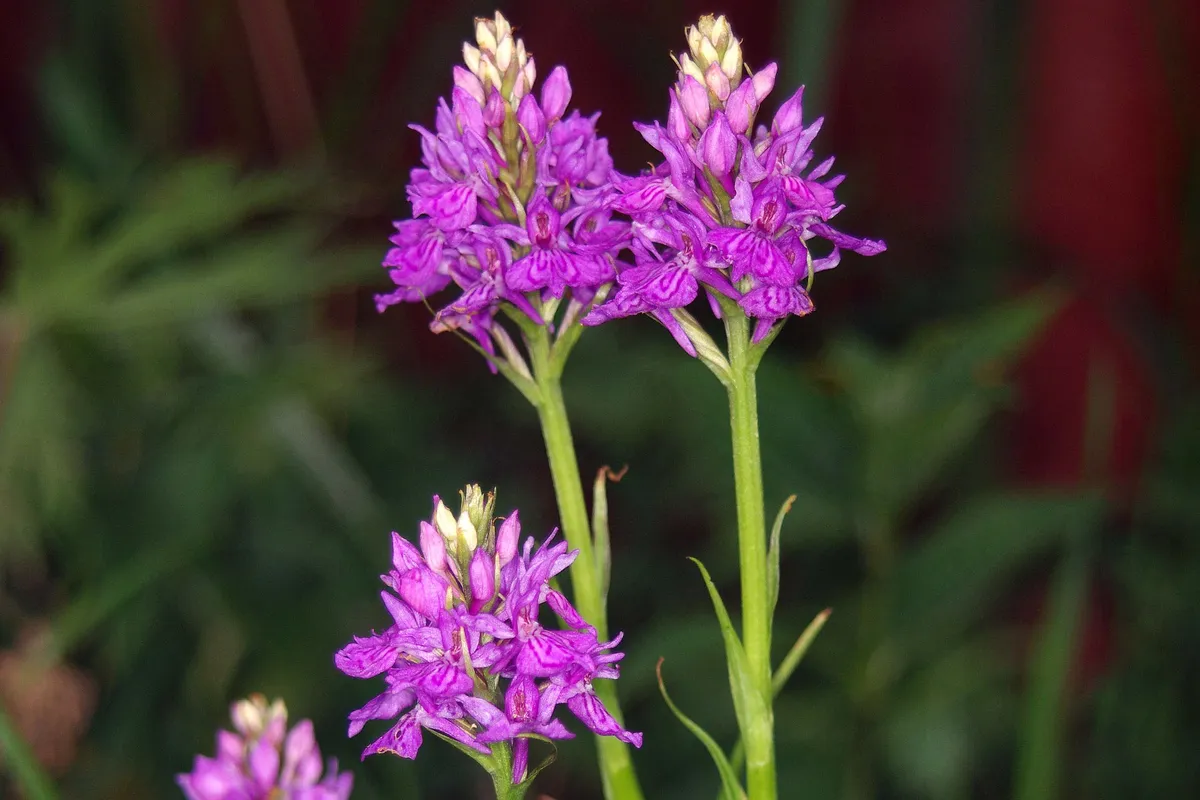
This robust native of Madeira can grow to 70cm and forms large, purple-flowered clumps in early summer. It tolerates part shade to full sun, providing the moisture levels increase accordingly.
Hardy orchids for gardens and containers
Bletilla ochracea
Needs moist, rich soil and sunshine. Produces delicate flowers June – July. Keep dry in winter by covering with a tile, or pane of glass or Perspex. Or grow in a pot and overwinter in a cool, frost-free place. 15-30cm. USDA 6a-10a.
Pleione formosana
Each pseudobulb produces a single, pretty flower, in colours ranging from white to subtle shades of pink with attractive markings. Ideal for pots, they need to be kept frost free over winter. 15cm. AGM. RHS H3, USDA 10a-11.
Bletilla striata
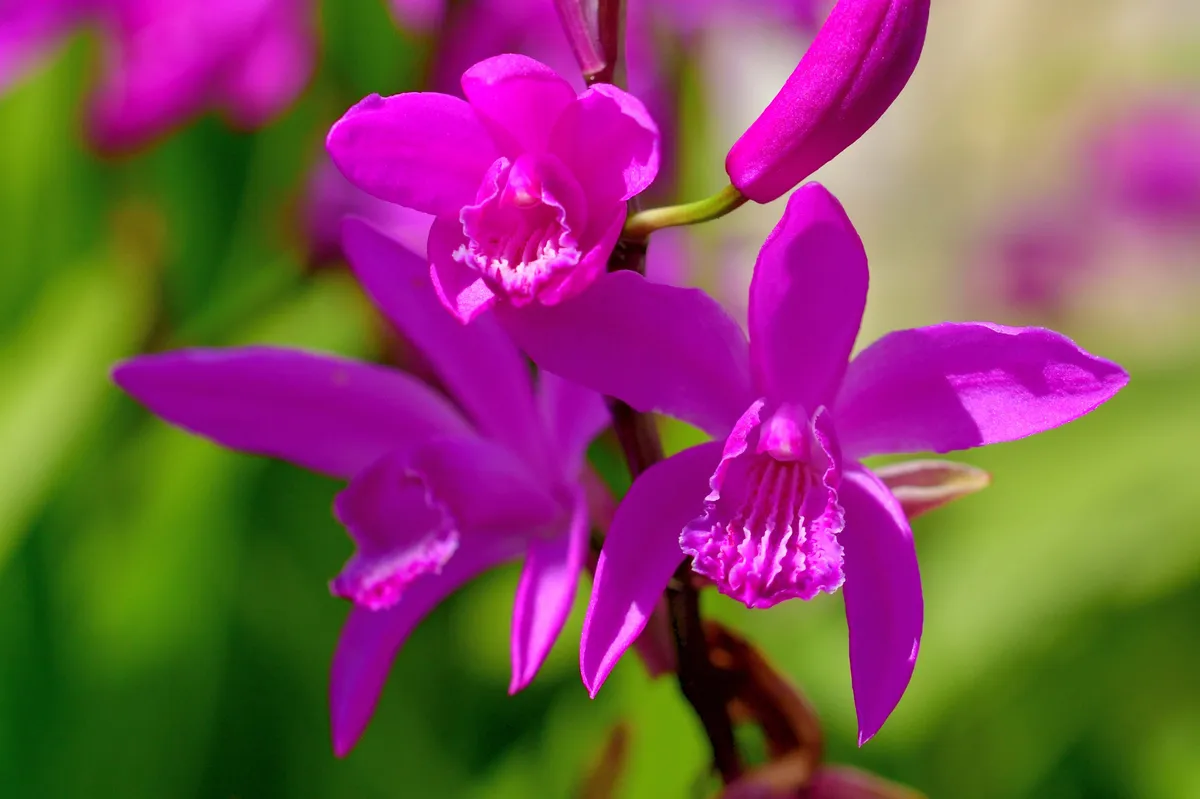
A pink-flowered delight that is widely available. It needs sunshine to flourish and a deep mulch to protect it from winter’s frosts. It
also dislikes winter wet. 45-60cm AGM. RHS H4, USDA 6a-10b.
Hardy orchids for woodland areas
Calanthe discolor
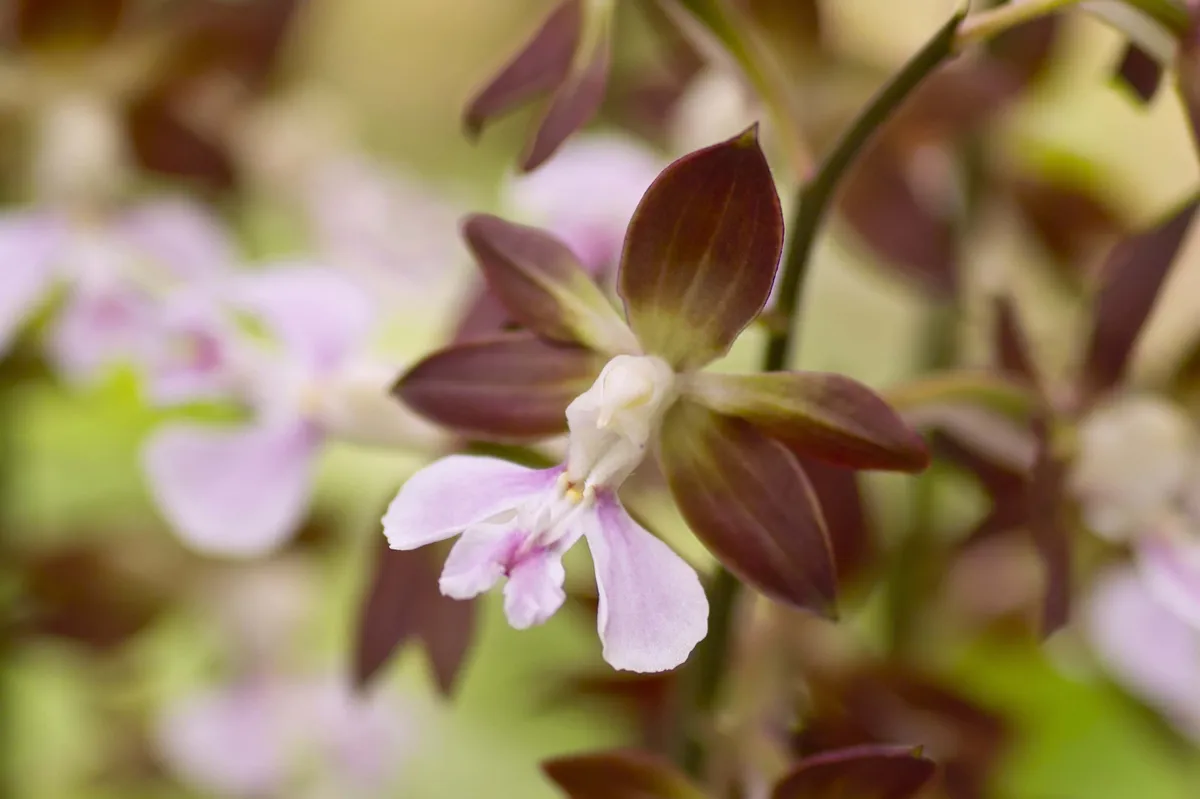
Delicate flowers, with cream, mahogany and pink markings, appear from late spring to early summer and are a joy. Use a large pot and they will happily spread to fill the space. 15-30cm. USDA 7a-11.
Calanthe tricarinata
This vigorous species, native to the Himalayas and southeast Asia, tolerates deep shade and bears several large flowers on spikes. Remains evergreen in mild winters but needs protection from hard frosts. 30-45cm. USDA 6a-8b.<
Pleione Tongariro
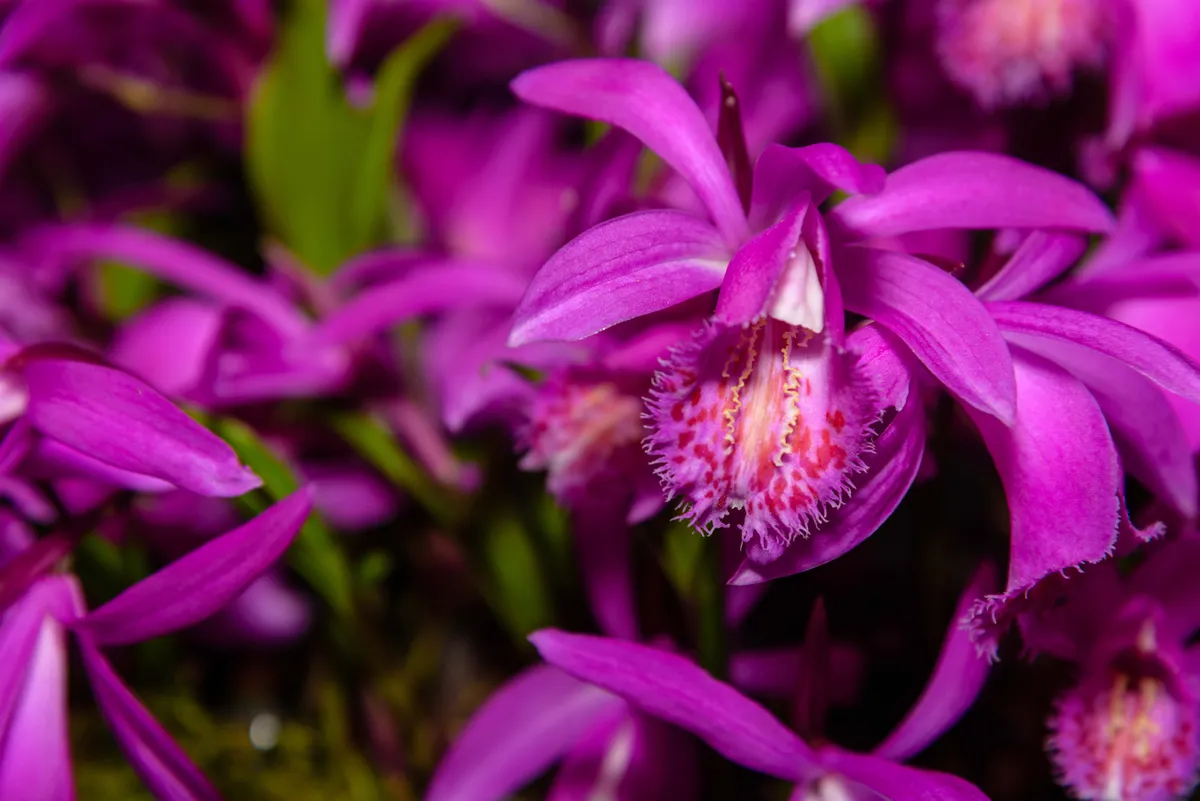
Has long-lasting, brightly coloured flowers, often producing two blooms per stem. Mine has survived several Hertfordshire winters in the shelter of a rhododendron, which also keeps it on the dry side in winter. 15cm.
Cypripedium guttatum
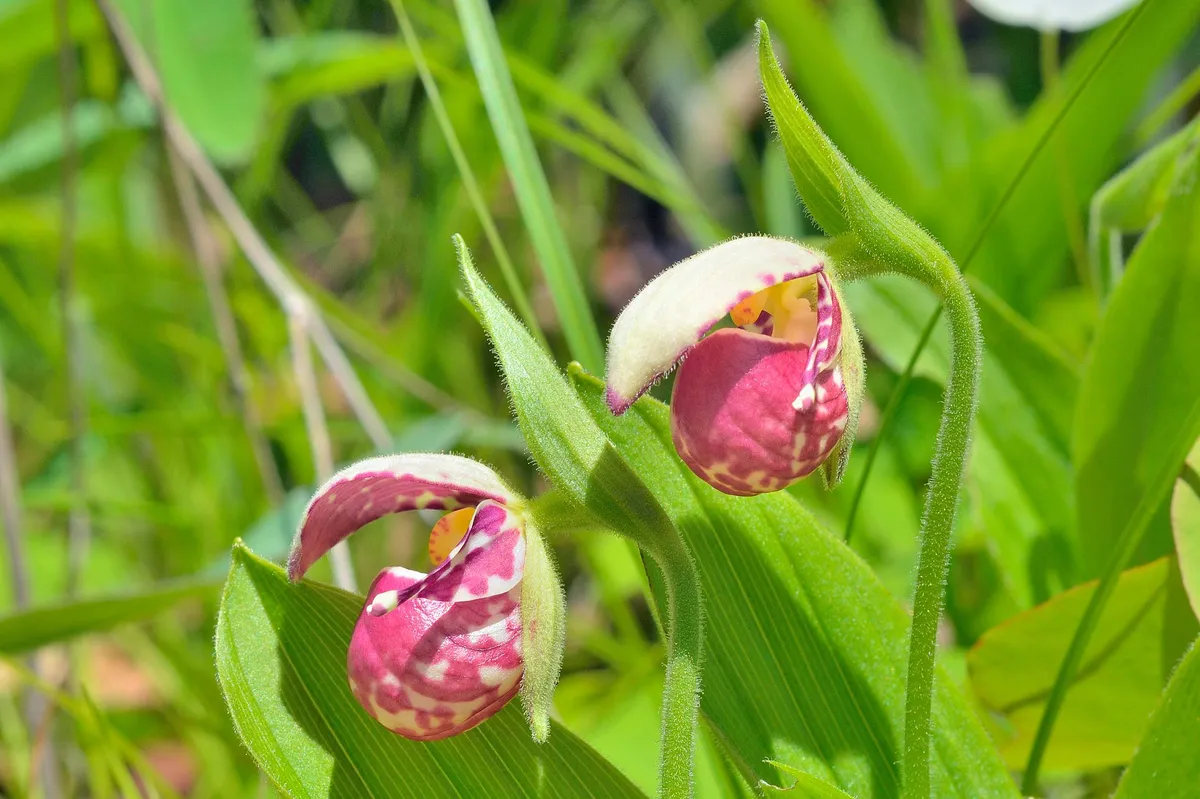
Known as the spotted lady’s slipper, this striking orchid is rare in cultivation, but grows well. It relishes moist, acidic, free-draining soil in part shade, and needs reliably cold winters. 15-30cm. USDA 2a-5a.
Cypripedium californicum
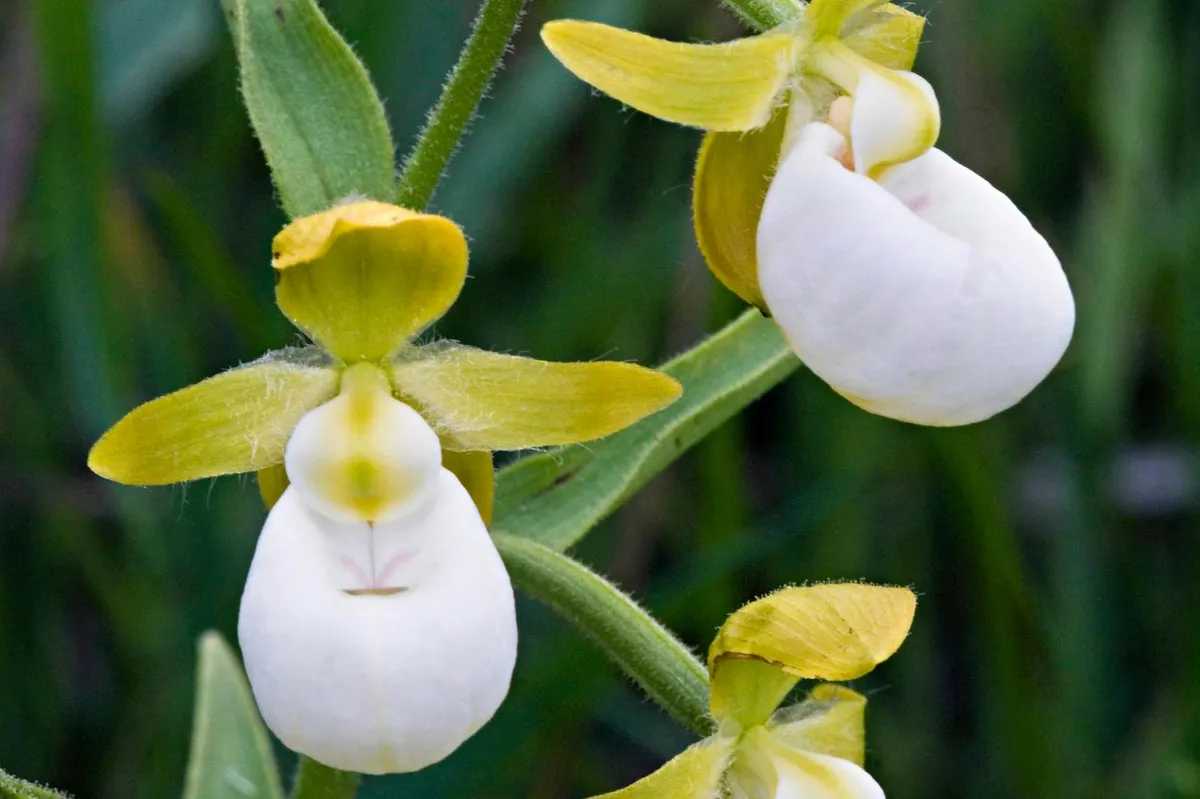
A rare orchid native to California and Oregon. Needs plenty of moisture during the growing season but should be kept dry in winter, so cover in similar way to Bletilla ochracea (see page 55). 60-90cm. USDA 8a-9b.
Cypripedium calceolus
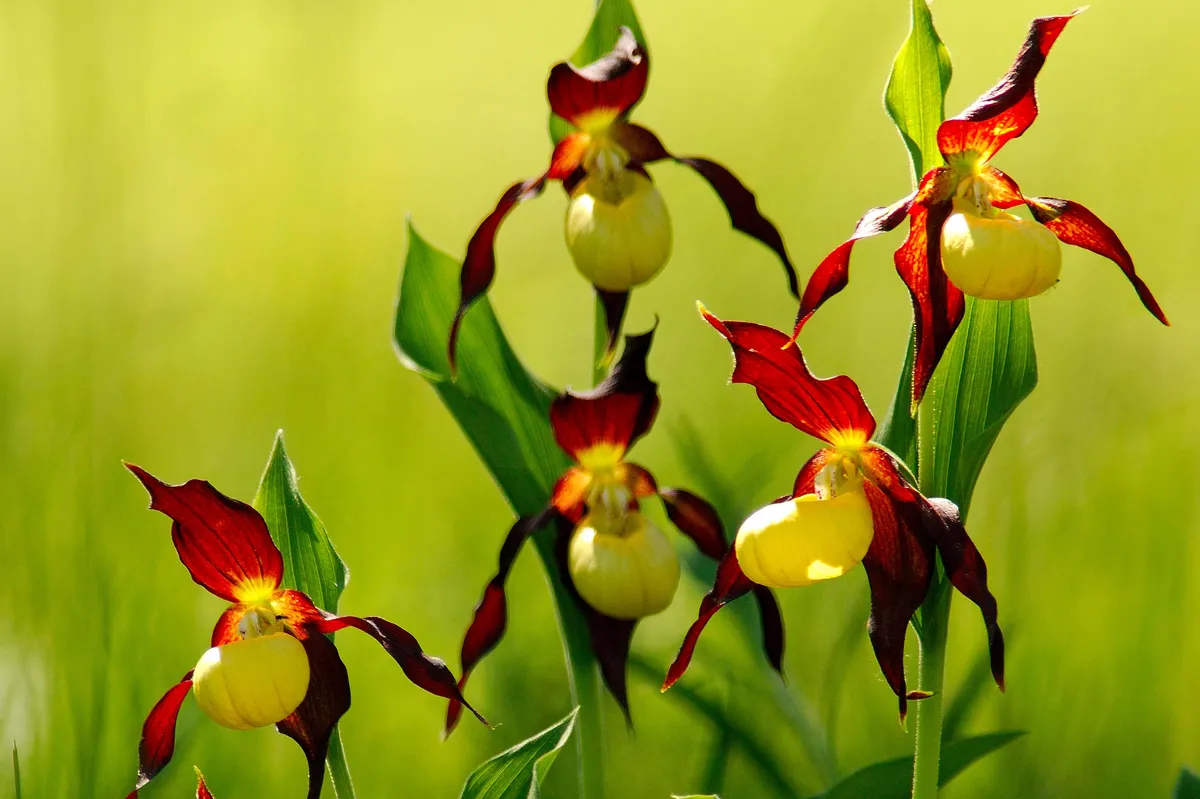
This lady’s slipper, native to Britain, flourishes in alkaline soil and part shade. So beautiful, it was almost driven to extinction in the UK by enthusiasts, although it remains widespread elsewhere. There are some similar-looking hybrids, but this remains a trophy plant for collectors. Only buy from reputable sources.
30-45cm. USDA 3a-8b.
Discover more about hardy orchids
You can find out more about growing hardy orchids from the Hardy Orchid Society. There are also several good books on the subject, including:
• Growing Hardy Orchids by Philip Seaton, Margaret Ramsay, Phillip Cribb, Grace Prendergast and John Haggar (Kew Publishing, 2011).
• Hardy Orchids by Phillip Cribb and Christopher Bailes (Batsford, 1991).
Where to see and buy hardy orchids
Orchids are still threatened in the wild, so only buy from reputable nurseries and cultivated sources. Remember it is illegal to dig them up from the wild.
• Alphabet Orchids
• Edrom Nurseries, Edrom Nursery, Eyemouth, Berwickshire TD14 5TZ
• Frosch Exclusive Perennials (mailorder only)
• Heritage Orchids (mailorder only)
• Laneside Hardy Orchids, 74 Croston Road, Garstang, Preston PR3 1HR
